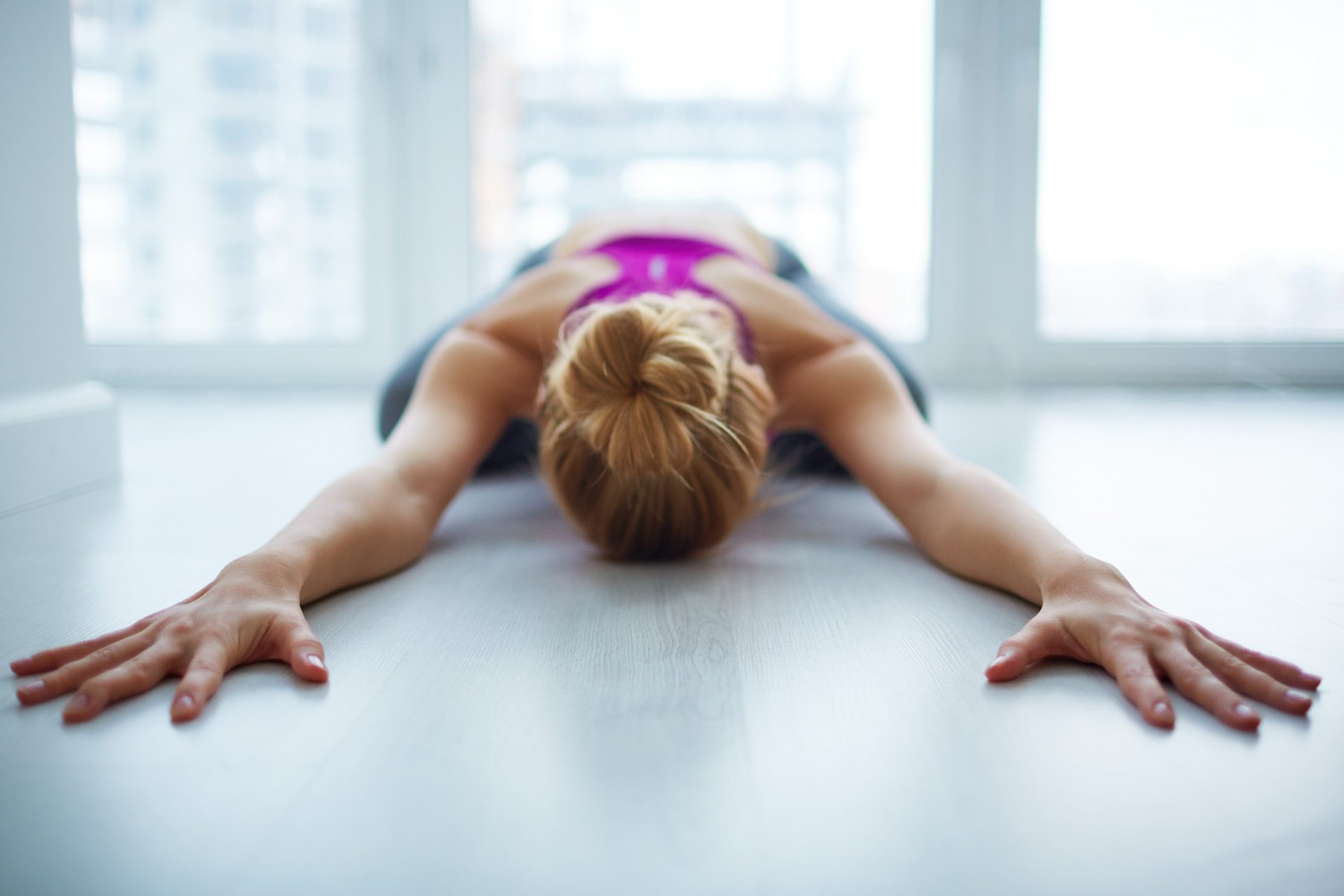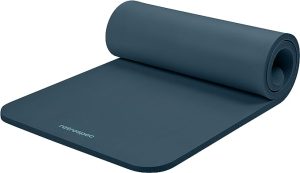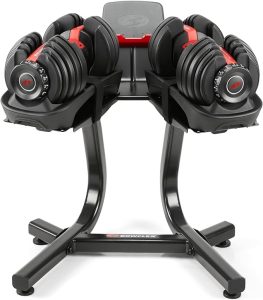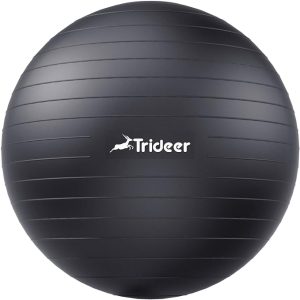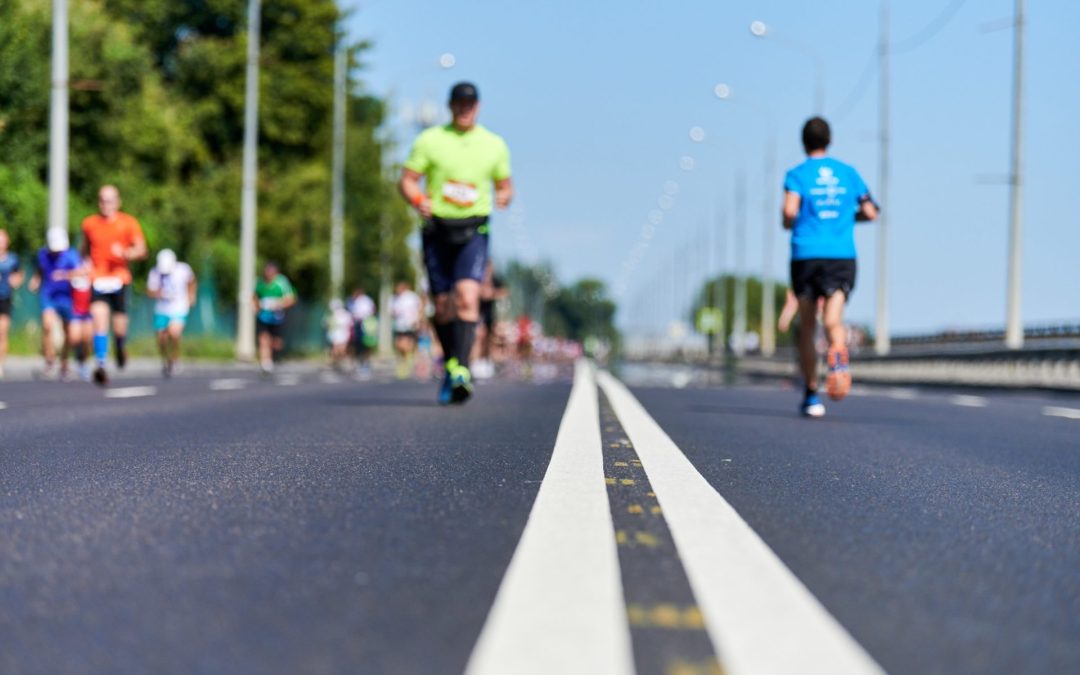Incorporating physical activity into your routine can be a daunting prospect when you’re dealing with herniated disc issues, but it’s not impossible. With the right approach, exercise can actually play a crucial role in managing and alleviating pain associated with this condition. In this article, we’ll explore how you can complete a full body workout with herniated disc pain. By focusing on strengthening and stabilizing key muscle groups, this workout aims to improve flexibility, reduce discomfort, and enhance overall quality of life for those navigating the challenges of disc herniation.
How to Measure the Severity of Your Herniated Disc
Living with a herniated disc can be such a discomfort laden with pain and distress. A herniated disc occurs when the disc between the two vertebrae, called the intervertebral disc, protrudes out of its normal site.
The intervertebral disc provides a cushioning effect for the vertebrae to sustain weight; aging and other factors, however, such as heavy weightlifting and poor posture cause the intervertebral disc to wear and tear. Hence, it protrudes from its normal position, reducing its cushioning effect and causing pain. This normally occurs majorly in the lumbar region, otherwise known as the lower back.
Before you decide this article is enough for you to get back in the gym, we strongly encourage you to visit your doctor to know how severe your herniated disc is. Your doctor will take your detailed medical history, including your symptoms, and physically examine you. Additionally, they will likely request you do some imaging studies. These imaging studies may include a plain radiograph of the spine, a spine computed tomography (CT) scan, and a Magnetic Resonance Image (MRI) of the spine.
In addition to your medical history, and the results of the scanned images, physicians will use the extent of disc protrusion, nerve impingement, and associated symptoms like pain, numbness, or weakness to determine the severity of a herniated disc. They will also use standardized scales, such as the Oswestry Disability Index, to gauge functional impairment.
Top 10 List of Herniated Disc Exercises
Although having a herniated disc might reduce your range of movement, there are some herniated disc exercises and stretches you can engage in to keep fit and stay healthy.
The following is a list of the top ten exercises you should consider engaging in:
1. Pelvic Tilts: These help you work on core muscle groups to support the spine.
Anterior Pelvic Tilt:
- In an anterior pelvic tilt, you tilt the front of your pelvis downward, arching your lower back.
- Lie on your back with your knees bent and feet flat on the floor.
- Tighten your abdominal muscles to press your lower back into the floor, tilting your pelvis upward.
- Hold for a few seconds and then release.
Posterior Pelvic Tilt:
- In a posterior pelvic tilt, you tilt the front of your pelvis upward, flattening your lower back against the floor.
- Similarly, lie on your back with knees bent and feet flat on the floor.
- Contract your abdominal muscles, lifting your tailbone off the floor and pressing your lower back down.
- Hold for a few seconds and then release.
2. Knee-to-Chest Stretch: This helps to relieve pressure from the lower back and stretch the spine.
- Start by lying on your back on a comfortable surface, such as a yoga mat or carpet.
- Bend your knees and keep your feet flat on the floor.
- Slowly bring one knee toward your chest. Use both hands to gently pull the knee closer to your chest. You can interlace your fingers just below the knee to support the stretch.
- Keep the opposite leg bent or straight, depending on your comfort level. You should feel a gentle stretch in the hip and lower back of the leg that you are bringing toward your chest.
- Hold the stretch for about 15-30 seconds, breathing deeply and relaxing into the stretch.
- Release the stretched leg and switch to the other leg. Bring the second knee toward your chest, repeating the stretch on the opposite side.
- Perform the stretch 2-3 times on each leg.
3. Cat-Cow Stretch: This improves spine flexibility and mobility.
- Begin on your hands and knees in a tabletop position. Your wrists should be directly under your shoulders, and your knees should be under your hips.
- Inhale as you arch your back and tilt your pelvis up towards the ceiling. Drop your belly toward the floor, and lift your chest and gaze forward. This is the “Cow” pose.
- Exhale as you round your spine, tuck your chin to your chest, and tilt your pelvis down. Imagine pulling your belly button toward your spine. This is the “Cat” pose.
- Continue to flow between the Cow and Cat poses in a smooth, rhythmic motion.
- Inhale as you move into Cow, and exhale as you move into Cat.
- Repeat the Cat-Cow stretch for about 1-3 minutes, focusing on the breath and the fluidity of the movement.
4. Child’s Pose: This helps to relieve lower back pressure and stretch the spine.
- Begin in a kneeling position on your mat. Sit back on your heels with your knees spread apart. Your big toes should be touching.
- Exhale as you hinge at your hips and lower your torso forward, bringing your chest toward the mat.
- Reach your arms forward on the mat, placing your palms flat on the ground. Your arms can be fully extended or you can choose to bring your forearms down to the mat.
- Allow your forehead to rest on the mat. If your forehead doesn’t reach the ground, you can use a yoga block or a folded towel for support.
- Relax your shoulders and let your upper body melt toward the floor. Feel a gentle stretch in your back, hips, and shoulders.
- Take slow, deep breaths in and out. Allow your body to relax and surrender to the pose.
- Hold Child’s Pose for 30 seconds to a few minutes, depending on your comfort level and how long you want to stay in the pose.
5. Partial Crunches: These support the spine by strengthening abdominal muscles.
- Lie on your back on a mat or a comfortable surface. Bend your knees and place your feet flat on the floor, hip-width apart. Keep your arms crossed over your chest or place your hands behind your head, avoiding pulling on your neck.
- Tighten your abdominal muscles to engage your core. This will help protect your lower back during the exercise.
- Exhale as you lift your head, shoulders, and upper back off the mat. Aim to bring your shoulder blades off the ground. Keep your lower back on the mat.
- At the top of the movement, pause for a moment and focus on squeezing your abdominal muscles. Avoid pulling on your neck, and keep your chin slightly lifted.
- Inhale as you slowly lower your upper body back down to the starting position. Keep control throughout the movement.
- Perform the partial crunch for a set number of repetitions, usually 10-15 to start, depending on your fitness level.
6. Wall Sits: This also helps to strengthen the lower back and core.
- Step your feet forward away from the wall, about hip-width apart. Your feet should be positioned so that when you lower into the wall sit, your knees are directly above your ankles.
- Begin to lower your body by bending your knees and sliding your back down the wall. Keep your back flat against the wall.
- Lower your body until your knees are bent at a 90-degree angle, as if you are sitting in an imaginary chair. Your thighs should be parallel to the ground.
- Hold the wall sit position for as long as you can maintain good form. Aim for 20 seconds to start and gradually increase the duration as you get stronger.
- Pay attention to your posture during the wall sit. Ensure your back is flat against the wall, and your weight is evenly distributed between both feet
7. Bird-Dog Exercise: This enhances stability and core strength
- Begin on your hands and knees in a tabletop position. Your hands should be directly under your shoulders, and your knees should be under your hips.
- Tighten your abdominal muscles to engage your core. Maintain a neutral spine with a straight line from your head to your tailbone.
- Lift your right arm straight forward, reaching it out in line with your shoulder. Keep your arm parallel to the floor.
- At the same time, extend your left leg straight back, reaching it out in line with your hip. Keep your leg parallel to the floor.
- Hold the extended position for a few seconds, focusing on keeping your hips and shoulders parallel to the ground. Keep your neck in a neutral position.
- Slowly bring your right arm and left leg back down to the starting position.
- Repeat the exercise by extending your left arm and right leg.
- Continue alternating sides, moving in a controlled and coordinated manner.
8. Bridges: This workout improves the tone of the lower back, glutes, and hamstrings.
- Lie on your back on a mat with your knees bent and feet flat on the floor. Your feet should be hip-width apart, and your arms should be resting by your sides with palms facing down.
- Tighten your abdominal muscles to engage your core. Ensure that your spine is in a neutral position.
- Press through your heels and lift your hips toward the ceiling. As you lift, focus on squeezing your glutes and engaging your hamstrings.
- Continue lifting until your body forms a straight line from your shoulders to your knees. Avoid over-arching your lower back.
- Hold the bridge position for a few seconds, keeping your core and glutes engaged. Make sure to breathe steadily.
- Gently lower your hips back down to the mat, returning to the starting position.
- Perform the Bridge exercise for 10-15 repetitions, gradually increasing the number of repetitions as you become more comfortable with the movement.
9. Seated Forward Bend: This strengthens the lower part of the back and hamstrings.
- Sit on the floor with your legs extended straight in front of you. Ensure that your spine is straight, and your toes are pointing toward the ceiling.
- Engage your core muscles to support your spine and maintain good posture.
- Inhale deeply to lengthen your spine.
- Exhale as you hinge at your hips and lean forward from the hip joints. Keep your back straight as you fold forward.
- Reach your hands toward your feet. If you can, grab your shins, ankles, or even your feet. Avoid rounding your back excessively.
- As you reach forward, focus on lengthening your spine. Imagine leading with your chest rather than collapsing your shoulders.
- Hold the forward bend for 20-30 seconds, or longer if comfortable. Breathe deeply and relax into the stretch.
- Inhale as you slowly release the stretch, lifting your torso back up to the seated position.
10. Walking: This is a non-weight-bearing aerobic exercise that helps to promote the spine’s health.
You know how to walk!
Top 3 Pieces of Workout Equipment That Could Help
2. Bowflex SelectTech 552 Adjustable Dumbbells and Stand
The Best Full Body Workout With Herniated Disc Issues You Can Do
Doing a herniated disk workout requires carefulness and caution. A balanced and full-body workout may help in addition to low-impact exercises that limit the strain on the vertebral column.
- Core-Strengthening Exercises: Do pelvic tilts and gentle abdominal contractions to activate the core muscles. Also, try modified planks to promote better core stability in a manner that would not lead to too much stress on the lower back.
- Upper Body Strength: Engage in seated or standing arm movements with light weights or resistance bands. Do chest presses on an incline bench to prevent overloading the lumbar spine.
- Lower Body Exercises: The Superman exercise, which is done while lying on your stomach to work the glutes and lower back, is an excellent example of this exercise. You can also try stationary lunges or squats with good body alignment and more controlled, minimized range.
- Flexibility and Stretching: Add mild stretches for the hamstrings, quadriceps, and hip flexors. For yoga or Pilates, try movements that give more attention to flexibility and precise movements.
Different Types of Workouts for Herniated Disc Injuries
Here, we will explore some different workouts for herniated disc issues.
- Swimming and water aerobics are low-impact workouts in water that provide resistance without stressing the spine.
- Stationary cycling is gentle on the back and improves cardiovascular fitness and leg strength.
- Modified yoga incorporates gentle yoga poses, emphasizing proper alignment and avoiding forward bends.
- Tai Chi promotes balance, flexibility, and core strength through slow, controlled movements.
- TRX suspension training utilizes bodyweight exercises with adjustable resistance, providing a customizable and controlled workout.
- Isometric exercises engage muscles without joint movement, aiding in strength-building without added stress.
- Recumbent biking supports the back while providing cardiovascular benefits.
Remember to tailor any workout to your specific condition, avoid activities that exacerbate pain, and consult with healthcare professionals for personalized treatment.
Stretches You Need to Do
Incorporating stretches can also help align your vertebral column, especially in a herniated disc situation. Some stretching exercises for a herniated lumbar disc include the following:
- Sphinx Pose: Lie on your stomach, prop up on your forearms, and arch your back slightly to stretch the spine.
- Puppy Pose: This movement is similar to Child’s Pose but with the hips elevated, providing a gentle stretch for the shoulders, back, and arms.
- Supine Twist: For this exercise, lie on your back and bring one knee across the body while keeping the shoulders on the ground, promoting spine rotation.
- Figure-Four Stretch: While seated, cross one ankle over the opposite knee, gently pressing down on the elevated knee to stretch the hips and lower back.
How to Speed Up Your Recovery
- Consult professionals by seeking medical attention and getting a treatment plan that is specific to your health situation.
- Do not stress your spine with intense activities, and modify activities as needed. Take time out to rest adequately. Make healthy sleep a priority for natural healing.
- Trying cold therapy by using ice packs will help reduce inflammation and ease the symptoms of a herniated disc.
- Try over-the-counter painkillers or use prescribed interventions while under the physician’s guidance for optimal pain management.
- Keep a normal body weight to decrease pressure on the spinal cord. A healthy weight can be maintained through regular exercise and a nutritious diet.
- Consider doing mind-body practices. For instance, you can incorporate stress-relieving practices such as yoga or meditation into the treatment. Doing mild exercise and herniated disc recovery go hand in hand.
- Lastly, be sure to drink lots of water and consume water-rich foods like watermelon and cucumber to stay hydrated.
Pain and Discomfort Mitigation
Apart from exercises for herniated lumbar disk, there are other strategies for pain and discomfort. Usually, conservative and non-surgical therapy is the treatment of choice for mitigating pain and discomfort from a herniated disc.
This involves the use of painkillers and muscle relaxants as prescribed by your physician. It also involves adhering to healthy lifestyle changes that support a healthy spine. On the other hand, there is a surgical option for treatment to reduce pain. Your physician will let you know what applies to you.
When to Seek Physical Therapy for Your Herniated Disc
Herniated disk physical therapy exercises can help you get rid of your symptoms. You should seek physical therapy in the acute phase when the symptoms are still mild. With proper physical therapy, you may not need to go through surgery.
Back Issues are the Worst
Back troubles, especially herniated discs, pose a physical and emotional challenge. The pain accompanied by physical immobility can be so unbearable to the extent that it interferes with daily activities.
Addressing the constant pain and finding viable treatments appears to be the primary objective if you have herniated disc problems. Stay positive and focus on enjoying the aspects of life that you can.
Stay Strong Mentally and Physically
It takes much more than herniated disc physical exercise to recover — it takes mental strength to heal. Building mental resilience goes along with physical efforts and creates an integrated rehabilitation system. Stay strong mentally, and don’t let yourself give up…you’ll thank yourself later.
Zoppler is reader supported and may earn affiliate commissions from links on this page. We support and believe in all the products and services we promote and are affiliated with.

